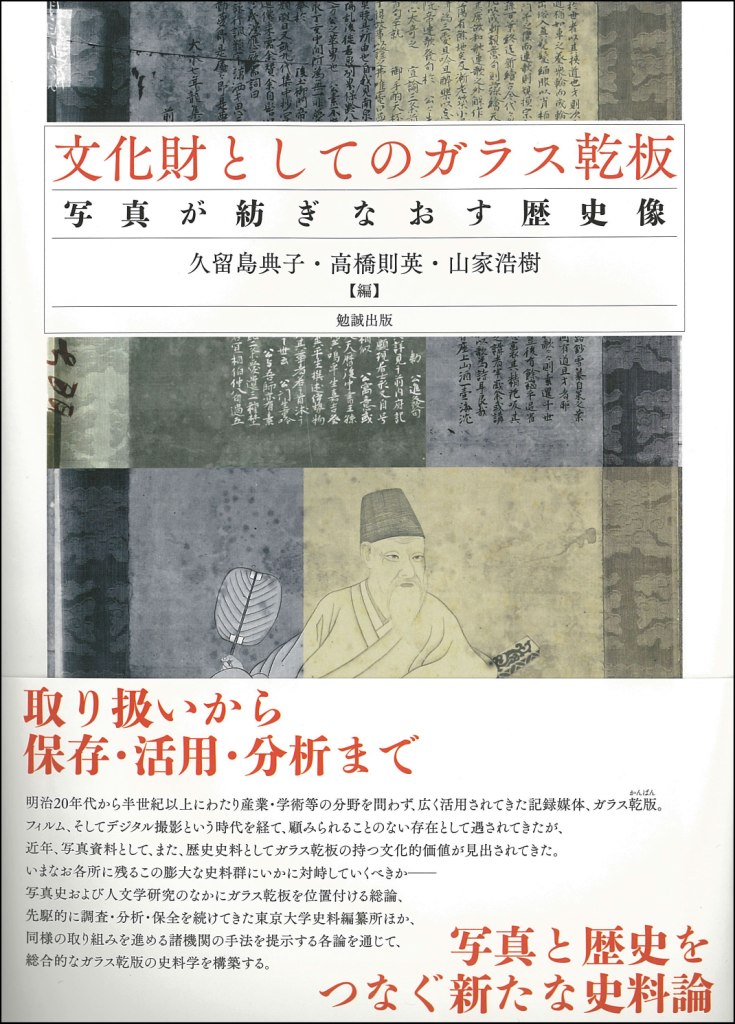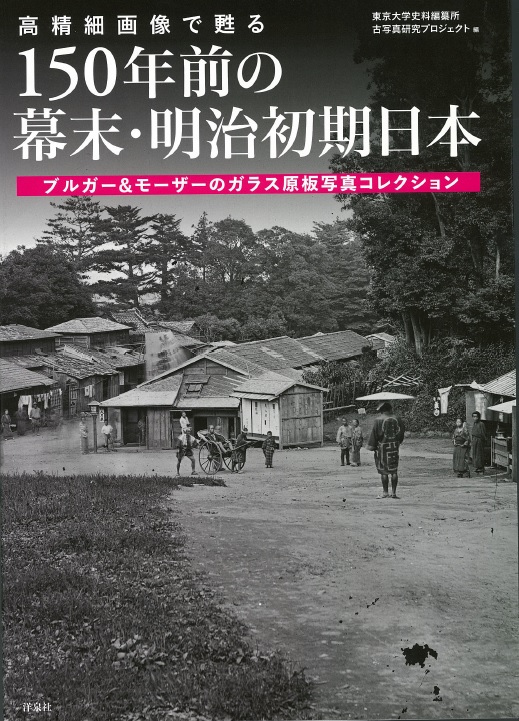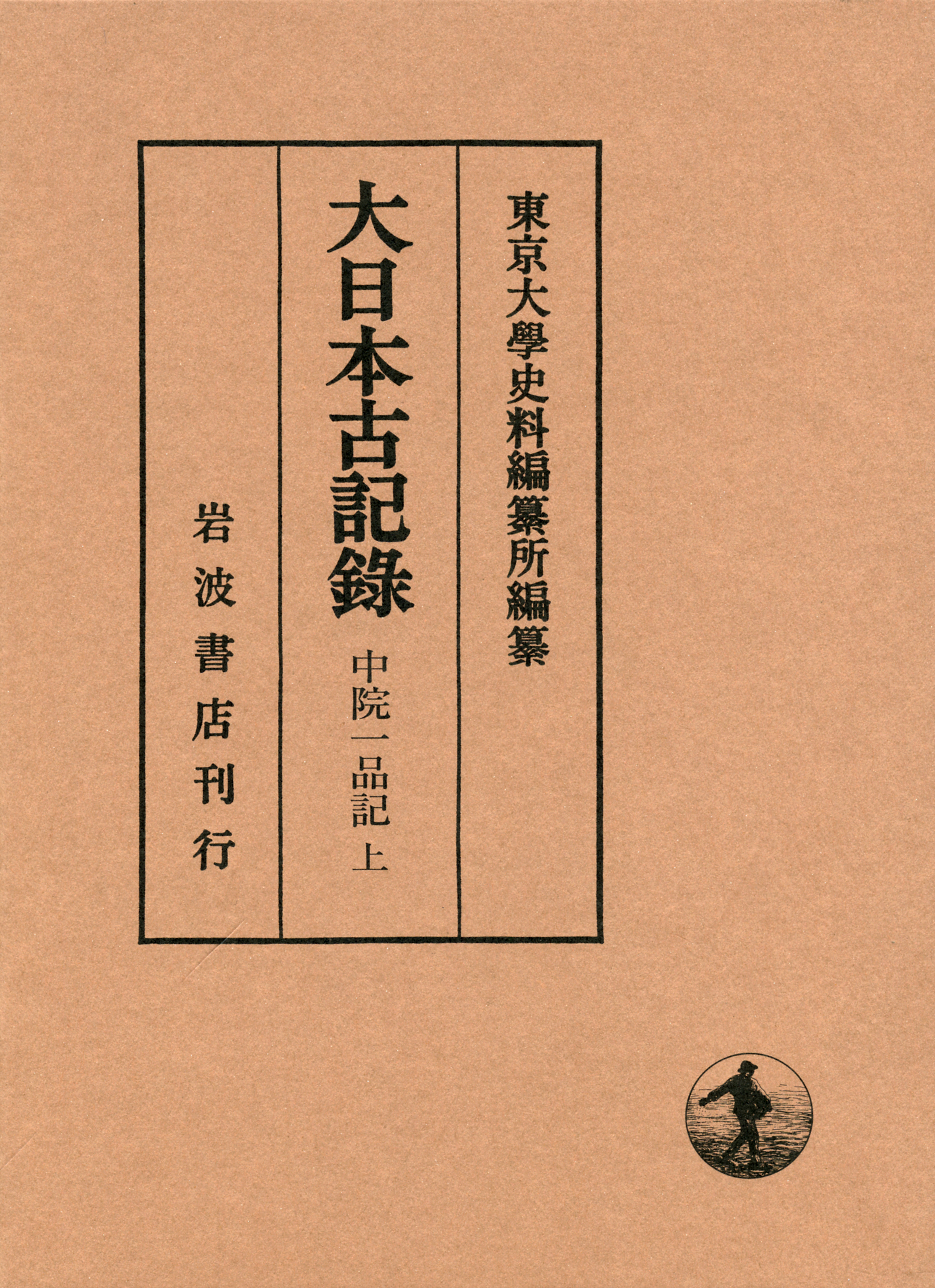
Title
Bunkazai toshite-no Glass Kanban (Gelatin Dry-Plate Negative [Photographic Plates] as Cultural Assets: The Picture of History Retold by Photographs)
Size
272 pages, B5 format, softcover
Language
Japanese
Released
April, 2017
ISBN
978-4-585-22173-9
Published by
Bensei Publishing
Book Info
See Book Availability at Library
Japanese Page
The Historiographical Institute at the University of Tokyo currently holds approximately 13,000 photographic plates. Following the campus strife of 1969, they fell into disorder and had, against our best intentions, remained virtually abandoned for more than forty years. This book is a record of the process of trial and error undertaken in order to restore this vast collection of photographic plates as a scholarly resource and also as a historical cultural asset. This task has only just begun, but by summarizing our experiences and some of the issues at the present point in time, we hope to share our perceptions with relevant academic societies, organizations, and researchers.
The main mission of the Historiographical Institute is to compile and publish basic collections of historical sources pertaining to Japanese history. The task of carrying out investigations throughout Japan in search of source materials began in earnest in the 1890s and has continued down to the present day. From the outset this was done not by collecting the originals of historical sources but by producing and accumulating exact copies. Over time, reproduction technology has changed from copying by hand to photographic techniques and now to the creation of digital data. During the course of these 130 years, the technique that was in use for the longest period of time was Gelatin Dry-Plate Negative (Photographic Plates). For more than sixty years, from the end of the nineteenth century, when their wide-spread use began in Japan, until the 1950s, photographic plates were considered to be the most reliable means of facsimile reproduction. But once they were replaced by easy-to-use film, the large and heavy photographic plates gradually became a nuisance and were pushed away into a corner of the Institute’s storeroom, where they remained for a long time.
Why do we need to turn our attention once again to these objects that ought to have been long forgotten? A major reason is changes in society surrounding scholarship. As a result of the unprecedented declining birthrate, ageing population, and concentration of the population in cities, basic units of the past, such as the household, village, and social groups, have grown weak, and in addition it has become normal for historical sources passed down in the household and so on to be lost. The continuing occurrence of natural disasters such as the 2011 Great East Japan Earthquake has made this state of affairs even worse. As former historical sources rapidly disappear, the position of accurately produced reproductions is changing. The historical sources photographed on Gelatin Dry-Plate Negative (Photographic Plates) include many the current whereabouts of which are unknown, and it is not uncommon for the photographic plate to be all that remains. In the midst of the advancing tragedy of the weakening of the foundations of historical research, ironically the importance of photographic plates as facsimile reproductions and their scarcity as cultural assets have come to be recognized.
At the same time, the deterioration of the photographic plates themselves also requires urgent action. Because even the most recent of these plates are about fifty years old, they are showing various physical symptoms. If we do not hasten to have specialists in photography carry out preservation work based on the latest methods, these unique photographs may also vanish. While tackling the question of how to treat the wide-ranging symptoms of deterioration, we are also faced with the question of how to restore the images as accurately as possible and make them available for academic use.
This book, focusing on the issue of the conservation of photographic plates, is a record of the struggle to overcome the crisis faced by historical research with the assistance of photographic science and other related disciplines. By introducing similar endeavours not only in the field of history but also in the humanities and adjacent disciplines, the existence of approaches from different perspectives from ours has also been taken into account. It is my hope to share with readers the crisis and issues currently faced by scholarship.
(Written by Satoshi Inoue, Assistant Professor, Historiographical Institute / 2018)



 Find a book
Find a book




